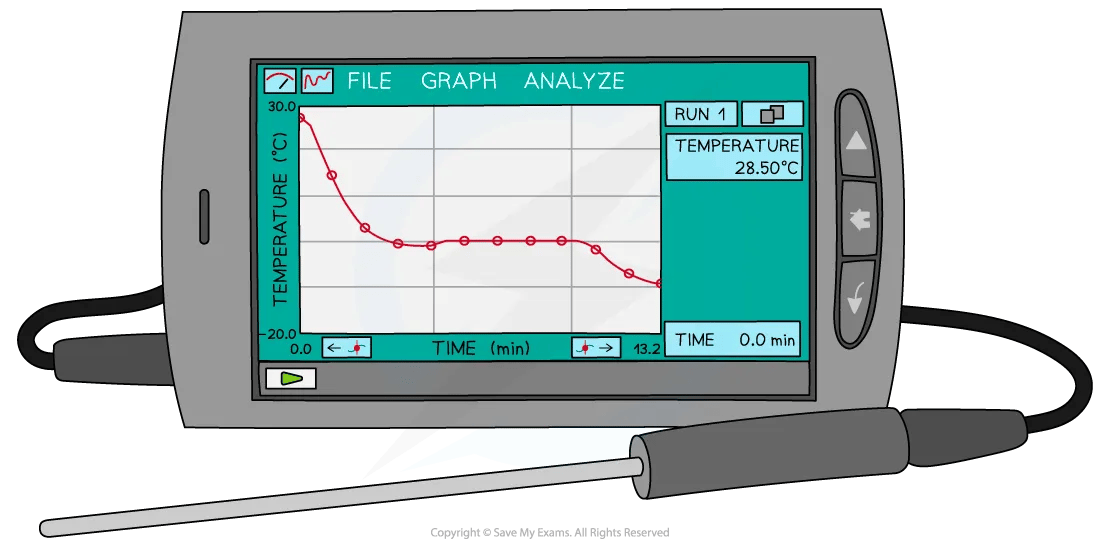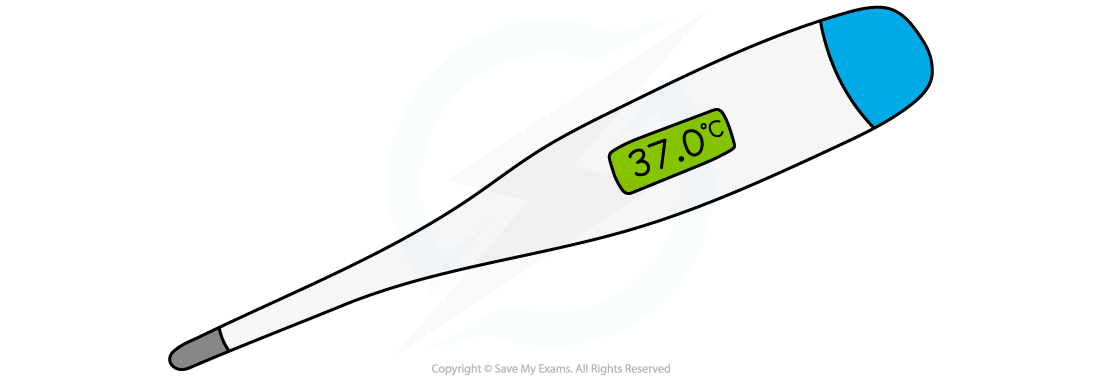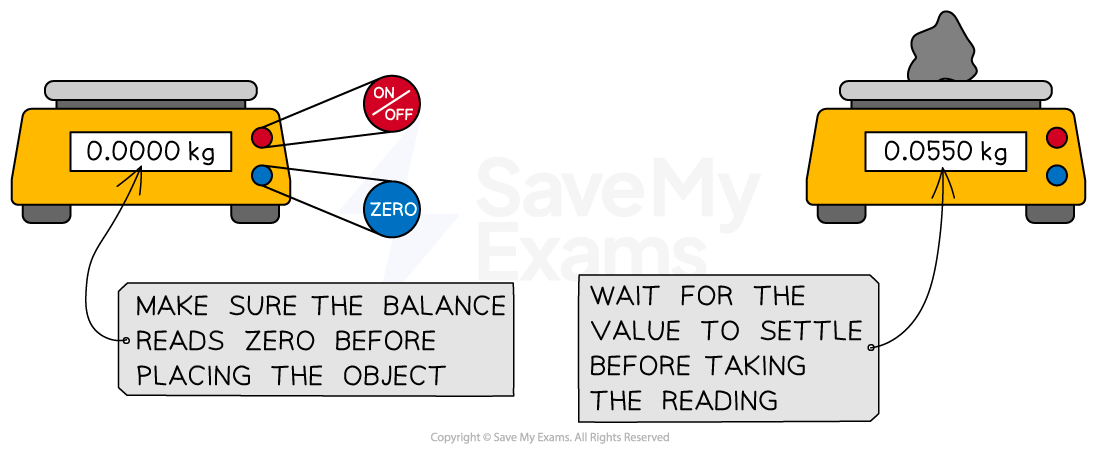Controlling Variables in Biology (DP IB Biology): Revision Note
Controlling variables in Biology
This is the practical application of the 'Controlled Variables' you identified in your design
The main goal of controlling variables is to minimise systematic errors—errors that consistently shift your results in one direction
By keeping all other factors constant, you can be:
more confident that any effect you measure is due to the change in your independent variable
ensure that the results are valid
ensure that only the independent variable affects the results
Methods of control
Appreciate when and how to calibrate measuring apparatus
To ensure your data is accurate, the instruments you use must be checked and calibrated
Calibration is the process of checking an instrument's readings against a known, reliable standard and adjusting it if necessary
You should consider calibration for key instruments in your design:
pH meters
Before taking readings, a pH meter must be calibrated using at least two standard buffer solutions (e.g. at pH 4.00 and 7.00)
This adjusts the probe's output to give correct pH values
Sensors and data loggers
A CO2 sensor or O2 sensor used to measure rates of photosynthesis or respiration should be calibrated against the known concentration of gases in the air
Microscope eyepiece graticule
Must be calibrated with a stage micrometer to determine the length of each graticule unit at a specific magnification
Digital thermometers and sensors
Their accuracy can be checked by placing them in boiling, distilled water (which should read 100.0°C at standard pressure) and a beaker of crushed ice (0.0°C)

A data logger connected to a temperature probe. 
A digital thermometer.
Digital balances
Must always be zeroed (tared) before use to ensure you are only measuring the mass of your chemical.

Digital balances
Appreciate when and how to maintain constant environmental conditions
Living organisms are sensitive to their environment, so controlling conditions is crucial
Maintaining temperature
For experiments involving organisms or enzymes, temperature is often the most important variable to control
The best way to do this is to use a thermostatically controlled water bath or an incubator
Place all your samples in the controlled environment for a set amount of time before starting the experiment to allow them to acclimatise
Maintaining other conditions
Depending on the experiment, you may also need to control factors like light intensity (using a lamp at a fixed distance) or humidity
Sometimes, a variable cannot be perfectly controlled (e.g. ambient room temperature might fluctuate slightly)
In these cases, the best practice is to monitor and record it
You can then discuss its potential impact in your evaluation
Choose representative random samples and minimise sampling errors
Biological materials (e.g. potatoes, leaves, insects) are naturally variable
It is impossible to have two individuals that are perfectly identical
To account for this, you must use representative samples and replication
Random sampling: In ecological studies, this involves using techniques like quadrat sampling to collect data that is representative of the entire area and avoids bias
Minimising sampling error in the lab:
Try to select samples that are as similar as possible (e.g. use potatoes from the same variety, leaves from the same plant, or organisms of the same age and sex)
Use a large number of replicates (e.g. 5 or more potato cylinders at each concentration) to reduce the impact of any single anomalous sample
Set up a control run where appropriate
A control or control group is a setup that is treated in exactly the same way as your experimental setups, but without the independent variable being applied
The purpose of a control is to prove that it is your independent variable, and nothing else, that is causing the observed effect
Example 1:
In an experiment testing the effect of different antibiotic concentrations on bacterial growth, the control would be a petri dish with bacteria but no antibiotic (a negative control)
This shows the bacteria are capable of growing normally
Example 2:
In an experiment testing the effectiveness of amylase, a control tube could be set up with starch solution but no enzyme
This proves that the starch does not break down on its own
Worked Example
Research question:
"What is the effect of pH (from pH 4 to pH 10) on the rate of activity of the enzyme trypsin in breaking down casein protein?"
Below is how you would identify and control the key variables for this experiment.
Temperature
Method of control
All test tubes containing the substrate and enzyme will be placed in a thermostatically controlled water bath set to 37°C for 10 minutes before being mixed
Justification
The rate of enzyme activity is highly sensitive to temperature
Maintaining a constant, optimal temperature ensures that any observed change in rate is solely due to the change in pH
Enzyme and substrate concentrations
Method of control
The trypsin and casein solutions will be made up as large stock solutions
The same volume of each solution will be measured for every trial using graduated pipettes
Justification
The rate of reaction is dependent on the concentration of both the enzyme and the substrate
Using stock solutions and precise measuring equipment ensures these concentrations are kept constant throughout the investigation
The validity of the results (Control run)
Method of control
A control tube containing the casein solution and a buffer at the optimal pH (e.g., pH 8) but with boiled, denatured trypsin (or distilled water) will be set up
Justification
This control proves that the breakdown of the casein is due to the action of the active enzyme and not due to spontaneous degradation or some other factor
Worked Example
Research question:
"What is the effect of sucrose concentration (from 0.0 M to 1.0 M) on the percentage change in mass of potato (Solanum tuberosum) cylinders after 24 hours?"
Below is how you would identify and control the key variables for this experiment to ensure a fair test:
Natural variation in potato tissue
Method of control
All potato cylinders will be cut from the same potato
Five replicate cylinders will be used for each sucrose concentration
Justification
There is natural variability in water potential even within a single potato
Using the same potato reduces this, and using five replicates ensures that the calculated average percentage change in mass is reliable and not skewed by one anomalous cylinder
Surface area of potato cylinders
Method of control
All cylinders will be cut with the same size 5 cork borer and trimmed to a length of 3.0 cm with a scalpel
Justification
The rate of osmosis is proportional to the surface area
Keeping the dimensions of all cylinders identical ensures that the surface area to volume ratio is a controlled variable
Temperature
Method of control
All test tubes containing the potato cylinders will be placed in a test tube rack and kept in the same location on a lab bench, away from windows or heat sources, for 24 hours
Justification
Temperature affects the kinetic energy of water molecules and thus the rate of osmosis
Maintaining a constant temperature ensures that any differences in mass change are due to the sucrose concentration alone
Examiner Tips and Tricks
Be specific about how you control a variable
Simply stating "I will control the temperature" is not enough
You must explain the method: "A water bath set to 37°C will be used to maintain a constant temperature."
Biology requires more replicates
Due to the natural variation in living things, it is good practice to use more repeats (e.g., 5) than you might in chemistry or physics to get a reliable average
Don't forget the control group
For many biology experiments, a control group (where the IV is absent) is essential to prove that your IV is causing the effect
Prioritise your controls
In your justification, focus your explanation on the variables that will have the most significant impact on your results (e.g., temperature in an enzyme lab, or evaporation from potato cylinders in an osmosis lab)
This demonstrates insight

Unlock more, it's free!
Did this page help you?